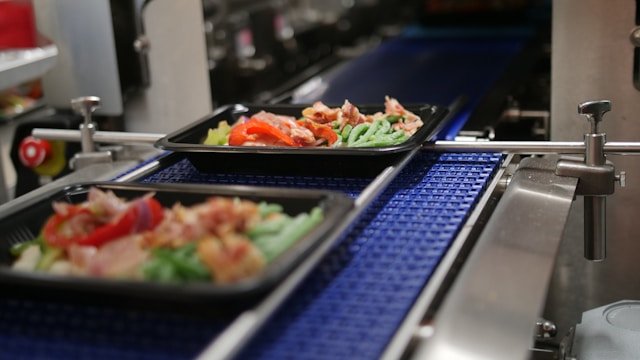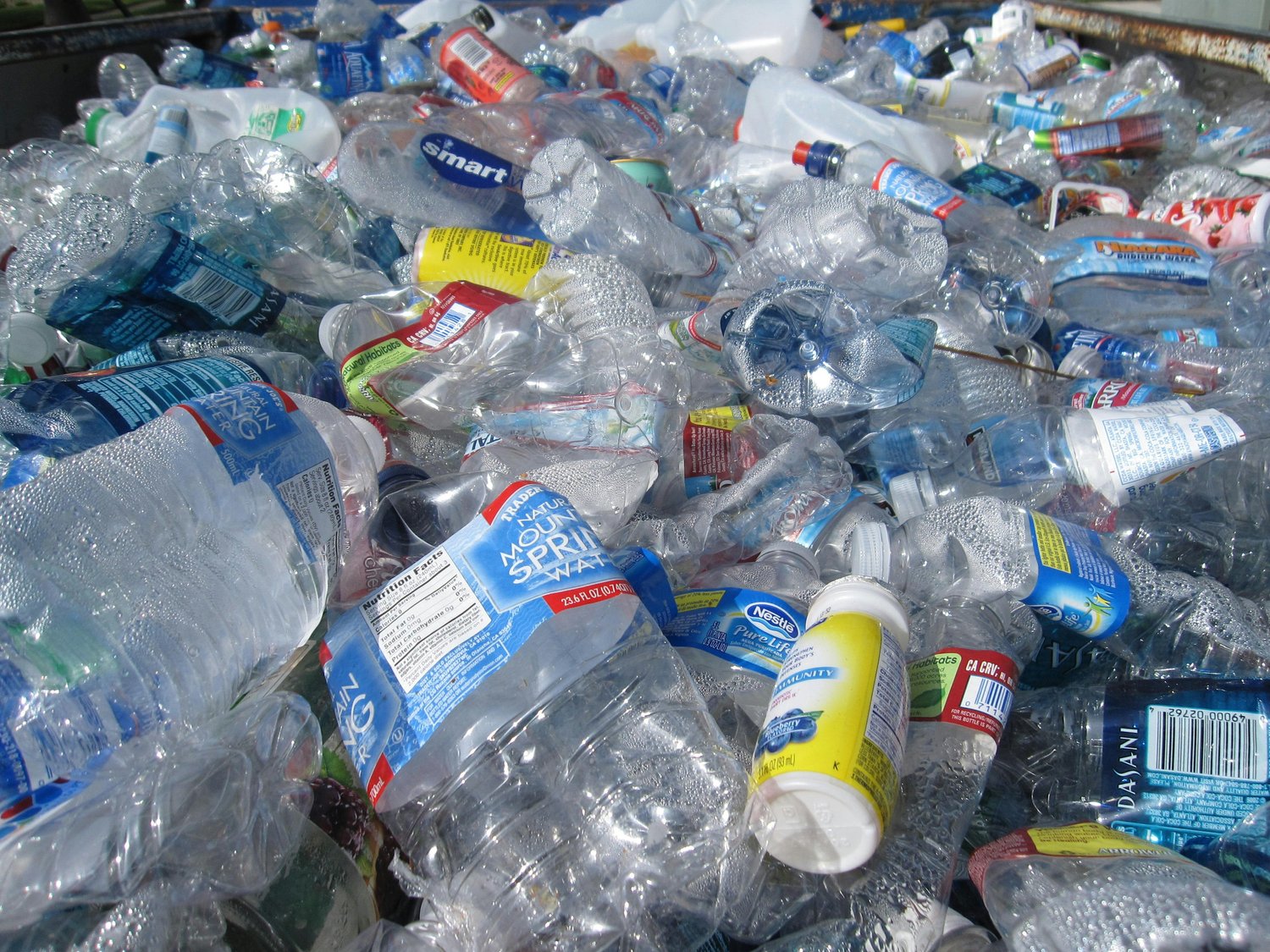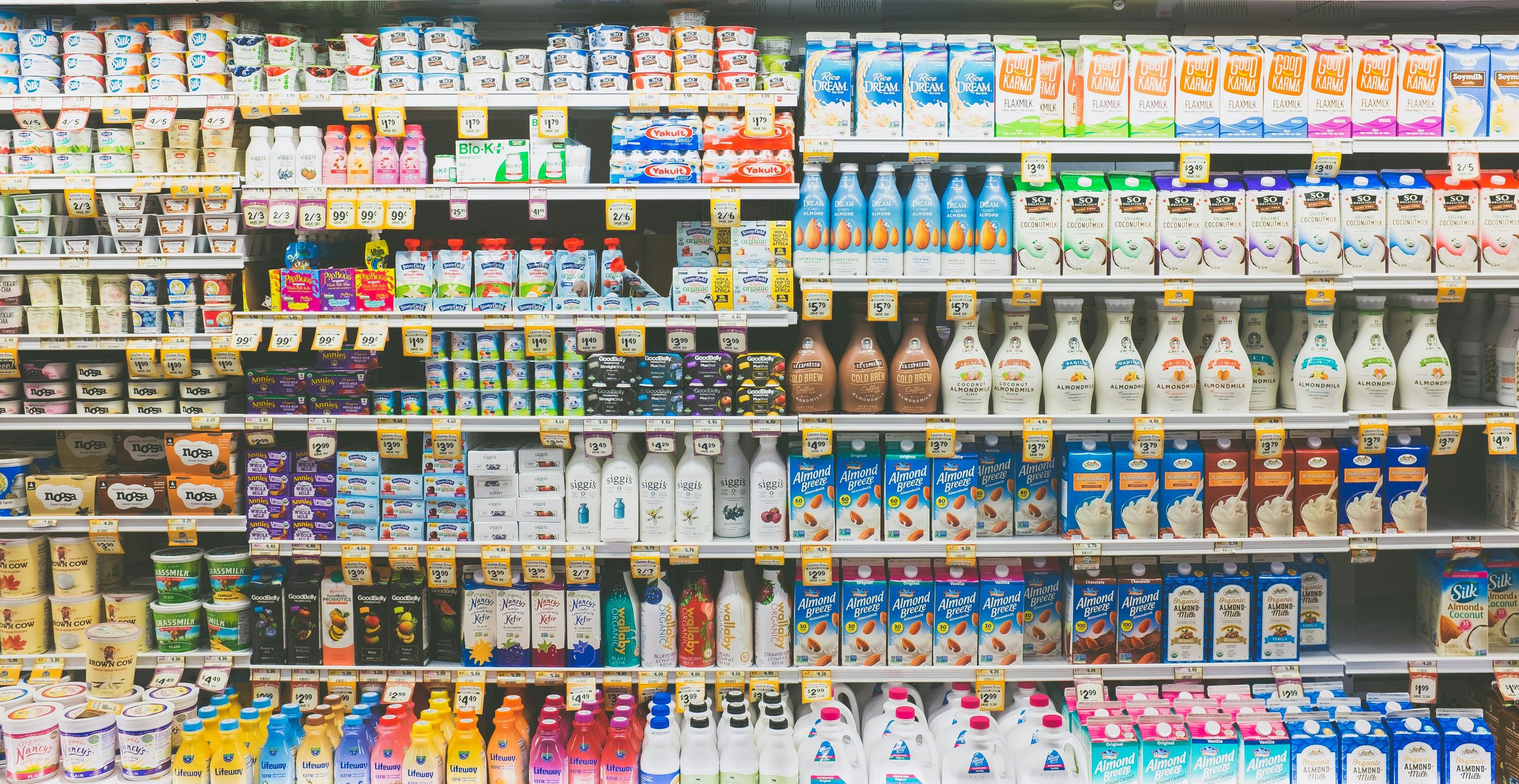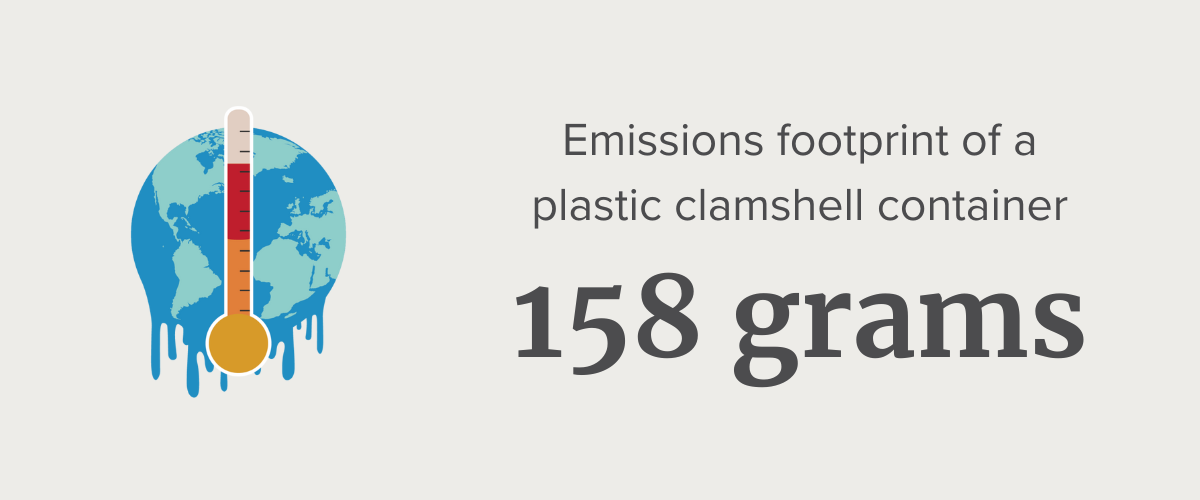
Reuse and Plastics
Reuse, Single-Use Plastics, and Moving to Plastic-Free
Single-use plastic is one of the most commonly produced items globally. Widely used in both consumer and industrial products, plastics touch almost every part of modern life.
It is undeniable that plastic has transformed quality of life for people across the globe. However, billions of single-use plastic items end up in landfills or as litter, contributing to pollution and climate change. Worse, if the global community follows a “business as usual” model, plastic’s environmental impact will only continue to grow: a United Nations (UN) analysis found that global annual plastic waste generation is projected to triple between 2019 and 2060.
There is both growing conversation and increasing actions to eliminate single-use plastics. This resource guide provides an overview of single-use plastics and the move to plastic-free reusables, and the efforts underway to address this issue in a sustainable way.
Table of Contents
What is plastic and why does it matter?

Plastic is a material that is composed of polymers. This material can be made from fossil fuels (traditional plastic) or renewable sources like corn (bioplastic). Polymers are chemical compounds whose molecules are very large – in fact, there can be thousands or millions of atoms in each molecule. These molecules give plastic many unique properties, such as pliability, low density, low electrical conductivity, and toughness. Unsurprisingly, these properties make plastic a popular material choice for many products.
With continued production increases, waste increases too. According to the Environmental Protection Agency (EPA)’s data, the U.S. generated an incredible 35.7 million tons of plastic waste annually, 12.2 percent of the total municipal solid waste generation. Plastic also creates an environmental footprint throughout its lifecycle, from the extraction of fossil fuels to manufacturing to disposal.
According to the EPA, single-use containers and packaging created the largest category of plastic tonnage in the U.S., at more than 14.5 million tons per year.
What is the current state of single-use plastics?
Single-use plastics refer to items made from plastic or polystyrene, such as food and beverage containers, bottles, straws, cups, cutlery, and disposable bags, that are specifically designed for one-time use before being thrown away. These products are commonly used in daily life and contribute significantly to environmental pollution due to their short lifespan and lack of recyclability.
Quantifying the scale of plastic use and disposal can help guide motivation to transition away from single-use plastics.

A recent Greenpeace report estimated that less than 6% of US plastic is recycled.
Around 137 million tonnes of single-use plastics were produced from fossil fuels in 2021; this is expected to rise by another 17 million tonnes by 2027, according to data from the Plastic Waste Makers Index.
The environmental nonprofit EarthDay.org estimated that global plastic production is now more than 380 million tons per year.
According to the UN, global annual plastic waste generation is projected to triple by 2060.
According to a Nature study, takeout consumer items contributed up to 88% of all litter items found in the ocean.
How does plastic impact our health?
The impact of plastic on human health is in the early stages of extensive study, and there is a need for ongoing research about the link between plastic and our health. In recent years, an increasing number of studies have examined the extent of plastic exposure and human health – and results suggest that plastics don’t belong in the body.
What are microplastics?
Microplastics have been discussed in many news cycles lately – and it is easy to see why. Microplastics are plastic particles between 5 millimeters and 1 micrometer. They occur when the polymers in plastics break down into even smaller pieces, but they never fully degrade. When they are introduced to an environment or a digestive system, they persist for a long time. The NIH names them as a “Global Threat for Environment and Food Safety.”
Plastic exposure

Unfortunately, there is growing evidence that humans are exposed to microplastics via inhalation and ingestion of food and drink. For example, a 2024 study found an incredible 240,000 nanoplastic and microplastic particles in a typical liter of bottled water. Another 2023 study examined the transfer of microplastics and nanoplastics from plastic containers and reusable food pouches. The study found that plastic containers release millions to billions of microplastics and nanoplastics when left at room temperature or refrigerated. This process is supercharged which heat is added – such as during microwaving – or when food is acidic. When plastic containers were microwaved for just three minutes, they released 4.22 million microplastic and 2.11 billion nanoplastic particles per square centimeter of plastic area.
Why should I care about microplastics and nanoplastics?
Unfortunately, when microplastics enter our food, they create immune and stress responses and induce reproductive and developmental toxicity. A 2024 study found a direct link between microplastics and heart complications, the leading cause of death in the United States.
However, while microplastics are damaging, emerging research suggests that nanoplastics – plastics less than 1 micrometer in diameter – are likely more dangerous. While our kidneys are likely able to filter larger microplastics from our bodies, nanoplastics are small enough to cross cell membranes and into our cells.
Read more: A compilation of recent plastic studies
Plastic chemical additives

Microscopic plastic particles are not the only components of plastic which disrupt our health. To make plastic clear, rigid, or soft, manufacturers add many plastic chemical additives. A United Nations Environment Programme (UNEP) report found more than 13,000 chemicals – such as plasticizers, colorants, reinforcements, and stabilizers – in plastics. Like microscopic plastics, plastic chemicals impact our health; in fact, many chemical additives are known endocrine disruptors, which disrupt our hormone-signaling pathways. By interfering with our bodies’ natural hormone pathways, chemical additives are linked to infertility, some cancers, metabolic diseases, neurological conditions, and immune system dysfunction. Chemicals of concern have been found in products ranging from toys to food packaging.
Many of us have already heard of some of the most famous plastic chemicals. Bisphenol A (BPA) launched to fame in recent years as studies uncovered that BPA can alter hormone concentrations or metabolism. Another class of chemicals, phthalates, have been linked to type II diabetes and insulin resistance, obesity, allergy, and asthma.
BPA and phthalates have had their time in the public eye, and many plastics manufacturers have rushed to add the label “BPA-free” to their products. Unfortunately, many plastic chemicals continue to be used with weak oversight. In the U.S., manufacturers can include additives with the FDA’s Generally Recognized as Safe (GRAS) list – a category which was created for food items with a long history of use and no evidence of harmful side effects, such as caffeine. However, organizations like the Center for Food Safety and the Environmental Defense Fund have sued the FDA over the GRAS system, claiming that “potentially unsafe chemical substances can be added to food.” The UNEP has also called for urgent action to address chemicals in plastics.
Read more: Why we should never microwave plastic
Even though plastics are widely used, they have not been sufficiently studied or regulated. Research in recent years has uncovered two key points:
- Microscopic plastics and plastic chemical additives are entering our bodies.
- These have been linked to human health impacts such as hormone disruption and heart complications.
There is a clear need to reduce the use of single-use plastics (and plastics in general), especially in our food systems, to reduce exposure to toxins.
How does plastic impact the environment?
Many of us are familiar with the idea that plastic is harmful to the environment. In fact, a plastic product leaves an environmental footprint throughout its lifecycle, from extraction of raw materials to disposal. Here’s how plastic impacts the environment in three critical ways.
Waste

Plastic waste is a problem globally. In the U.S., more than 14.5 million tons of plastic waste are generated annually from containers and packaging alone, according to the EPA. Unfortunately, 75% of that waste ends up in landfills, where plastics break down into microplastics and nanoplastics.
Some plastic does not end up in a sealed landfill and instead reaches the environment. According to the Plastic Pollution Coalition, the equivalent of 65 trash trucks per day of plastic waste is dumped into the ocean in the United States via land, rivers, and coasts. Globally, one-to-two million tons of plastic enter our oceans each year creating a critical problem for the environment. Plastic pollution in the oceans has myriad effects on wildlife. For example, the chances of disease on a coral reef are increased by 22-fold by plastics. Animals that ingest plastic can be injured from rough pieces, or their digestive systems can’t tell they aren’t eating enough if their stomachs are full with plastic instead. These wildlife impacts can also trickle back to humans; many marine animals eat microplastics, which can end up in the human food supply.
Emissions

While many people realize that plastic creates significant waste, the public is less aware that plastic also contributes to climate change. Greenhouse gasses are released throughout the plastic lifecycle, from extraction of raw materials to manufacturing to disposal. In fact, fossil fuels like oil, gas, and coal are the building blocks of most conventional plastics. Overall, plastic production and disposal comprises 3% of global greenhouse gas emissions.
Significantly, around 90% of plastics emissions come from the production of plastics. During this carbon-intensive process, companies extract fossil fuels from the ground through fracking, drilling, or mining and then transport the fossil fuels. These fossil fuels are then converted to plastics through refining and manufacturing – another greenhouse gas-intensive process. This indicates that reducing plastic production is the most effective way to minimize plastic emissions.
Single-use plastics have an inherently quick turnaround to disposal. Plastic’s end-of-life emissions greatly depend on the method of disposal. For example, landfilling and recycling produce lower emissions. On the other hand, if plastic is incinerated, it releases potent chemicals, including black carbon, which is 5,000 times more potent than carbon dioxide as a greenhouse gas. And when plastic breaks down in the ocean, it releases the strong greenhouse gasses methane and ethylene.
Read more: Plastic and Climate Change: What’s the Connection?
Water

The public does not typically associate water with plastic. However, plastic, like any object, has a “hidden water footprint.” This total water footprint combines plastic’s blue water footprint (water used in production) and gray water footprint (water pollution). Plastic’s blue water footprint is generated during the production of materials in plastic, assembling, and packaging. The gray water footprint is created indirectly. Plastic’s manufacturing process creates wastewater. Since manufacturers must meet pollution limits, they add additional water (“gray water”) to clean and dilute the wastewater before releasing it into surrounding waterways.
In total, plastic has a water footprint of about 28 gallons per pound.
What role does recycling play in management of single-use plastics?
What role does recycling play in management of single-use plastics?
Plastics manufacturers have long assured the public that as long as we toss our plastic cup, container, or food packaging into the recycling bin after we use it, there will be no harmful impact on the environment. After all, that material will simply be transformed into a new object – right?
Unfortunately, in practice, plastics recycling has many flaws and shortcomings.

Because plastics recycling is not financially sustainable, many U.S. municipalities have cut back on recycling.
Recycling is a business that will continue only if it is financially sustainable. Historically, the United States shipped most of its recyclable plastics to China, which used the material for manufacturing. However, 30% of this material was contaminated with other types of waste, leading to pollution problems in China. As a result, in 2018, China enacted the National Sword Policy, which enforced more stringent purity standards for imported plastics. Without the Chinese markets, U.S. municipalities are losing money on their plastics recycling programs, which has led communities to cut back on their programs.
Plastic is not built to be recycled.
Despite marketing efforts, plastic is not built for long-term recycling.
- Unlike materials like stainless steel or aluminum, plastic’s quality degrades in the recycling process. Plastic can only be recycled 1-2 times. For example, HDPE, the type of plastic used in milk, water, and juice bottles, is typically downcycled into decking, garden materials, or garbage bins.
- New plastic is always less expensive and of better quality than recycled plastic. As a result, consumer goods companies prefer to buy virgin plastic.
- Many of us are familiar with resin identification codes – the “chasing arrows” symbols found on most plastic containers. However, these symbols are an example of misleading green marketing: they signify a plastic’s category, not its ability to be recycled. Only plastics labeled #1-2 are widely accepted by U.S. recycling facilities today. See the Environmental Protection Agency’s 2023 comment on the use of the “chasing arrows” symbol here.
Categorizing plastics by resin identification code coupled with chasing arrow symbols does not accurately represent recyclability as many plastics (especially 3-7) do not have end markets and are not financially viable to recycle.
— US EPA Comments, 2023
Read more: Recycling is not the answer to our plastic problem
What are alternatives to single-use plastic?
As the need to reduce single-use plastics has become clear, several alternative solutions have emerged.
Compostable packaging

Many institutions have turned to compostable packaging as a part of their sustainability strategies. Compostable packaging is useful in some applications, but there are widespread misconceptions about this material among both consumers and decision-makers.
The word “compostable” describes packaging that was designed for composting as an end-of-life solution. This type of packaging is designed to be either commercially compostable (it will break down in an industrial composting facility) or backyard compostable (it will break down in small piles at a consumer’s home). During the composting process, packaging breaks down into carbon dioxide, water, biomass, and more. Critically, this process only occurs if the packaging reaches an industrial composting facility or home compost pile, depending on the type of packaging. If it ends up in the trash and brought to landfill, most compostable packaging will not break down.
Unfortunately, industrial composting facilities are not yet widespread. A Winter 2023 survey found that 11 states lacked any full-scale composting operations, and identified 21 states with three or fewer composting sites. The Sustainable Packaging Coalition estimates only 11% of American households have access to composting facilities that can accept compostable packaging.
Overall, compostable packaging is a solution to some, but not all, applications. Furthermore, in order to truly reduce waste and emissions, compostable packaging must be properly composted at the end of its life. This indicates a need to expand the availability of composting infrastructure, educate the public about compostable materials, and prioritize different solutions, such as reuse.
Read more: Compostable packaging: AKA Expensive Trash
Bioplastics
Bioplastics are a type of plastic made with naturally derived materials, either with or in place of a petroleum base, and made from renewable materials like corn, sugar, and potatoes. Some bioplastics are also made to be compostable, but not all. But like all compostable packaging, bioplastics are designed to break down in a specific set of conditions present in industrial composting facilities. Therefore, they must be composted in order to provide an environmental benefit.
Lack of education about bioplastics creates unique complications. For example, PLA bioplastic looks similar to conventional plastic, so many consumers may toss bioplastic in the recycling bin. When this happens, bioplastics contaminate the recycling process which relies on pure flakes of traditional plastic. Similarly, composting facilities may remove them from their feedstock since it is possible the bioplastic is not compostable, and they do not want to risk contamination. Thus, when institutions choose bioplastics, they must include education, product labeling, and signage to reduce recycling contamination and ensure proper disposal.
Finally, bioplastics that are compostable do not add any valuable nutrients to the compost the way food scraps and fibers do. Therefore they are typically undesirable to the composter who would be selling the final compost product.
Plastic reusable packaging
Plastic reusables are another emerging alternative to single-use plastics. Within the context of containers and packaging, reusable plastic options are thicker and more durable than single-use options, and are made of polypropylene (PP). Lifecycle assessments have found that reusable plastic containers must be used sometimes as many as 208 times to have a smaller environmental impact than single-use counterparts. When choosing a reusable plastic option, it is important to consider the container’s durability, since it must be reused repeatedly in order to create a sustainable impact.
Plastic reusables can be a viable option for some applications. However, in the context of food packaging, plastic reusables have the same health drawbacks as their single-use plastic counterparts. Like single-use plastic, plastic reusables shed microplastics and leach plastic chemicals into food, especially if that food is acidic or has been microwaved. According to a 2023 University of Cambridge study, hazardous chemicals like endocrine disruptors and carcinogens can be released from plastics during reuse.
The other problem with plastic reusables is that we often associate plastics with disposables.
Reusing and recycling plastics can also lead to unintended negative impacts because hazardous chemicals, like endocrine disrupters and carcinogens, can be released during reuse and accumulate during recycling.
— Geueke & Phelps, 2023
Reusable plastic containers have the potential to contribute to reducing plastic waste. However, reusable plastic is not a viable option for products that have the potential to leach contaminants into the human body.
Plastic-free reusables

Plastic-free reusables are an important alternative to single-use plastics. This is particularly relevant in everyday items like food packaging and personal care products. From a human health perspective, materials such as stainless steel, aluminum, silicone, and glass are safe to use in a variety of applications. These materials are durable, and with reuse they have a small impact on the environment.
- Plastic-free materials are durable and can often be reused infinitely. Studies have found that stainless steel containers last well over 1,000 uses. Glass bottles and jars can also be reused repeatedly until they crack or chip.
- With prolonged use, plastic-free materials are better for the environment. For example, once a stainless steel cup is used 20-42 times, it becomes the more sustainable option compared to single-use cups. Likewise, glass to-go cups become the more sustainable option after 10-24 uses.
- Many plastic-free materials are safe for human health. Food-grade stainless steel is resistant to corrosion and is non-reactive, so it does not interact with acidic or alkaline foods.
- Plastic-free materials have higher recycling rates than plastic (5-6%). For example, the EPA estimates that 74% of steel containers and packaging is recycled. Aluminum containers and packaging have a recycling rate of 50%, and glass has a recycling rate of 31%.
A plastic-free container, when paired with an effective reuse scheme, will provide the most beneficial effect on human health and the environment.
What are practical steps to reduce plastic at your institution?
It is critical for decision makers at corporations, governments, and colleges and universities to make informed decisions about how to reduce single-use plastics. The following list is adapted from policy recommendations by the United Nations Environment Programme (UNEP). These recommendations were informed by UNEP’s lifecycle meta-analyses of single-use plastic items, including takeaway food packaging, beverage bottles, and supermarket packaging.
Reduce the use of single-use products regardless of the material: According to the UNEP: “Replacing one disposable product (e.g. made of plastic) with another disposable product made of a different material (e.g. paper, biodegradable plastic) is only likely to transfer the burdens and create other problems.”
Promote reusable products: Life cycle assessments consistently find that reusable products have lower environmental impacts than single-use products. Policy interventions such as single-use plastic bans and purchasing choices such as reusable takeout container programs should encourage effective reuse.
Consult life cycle assessment and credible information sources: Reputable sources about the environmental and health impacts of single-use plastics and their alternatives must guide decision-making.
Know your context: Choose a single-use alternative that makes the most sense for your geographic and social context.
Consider end-of-life scenarios: Not all reusable alternatives are created equal. It is important to consider the most likely end-of-life scenario for reusable materials. For example, recycled aluminum and stainless steel are valuable products and can be recycled indefinitely, while recycled plastic is degraded during the recycling process.
Resources for further reading
Plastic and health
- Rapid single-particle chemical imaging of nanoplastics by SRS microscopy: Researchers discovered nanoplastic and microplastic particles in bottled water.
- Assessing the Release of Microplastics and Nanoplastics from Plastic Containers and Reusable Food Pouches: Implications for Human Health: Researchers found that baby food containers leached microplastics and nanoplastics into food.
- Microplastics and Nanoplastics in Atheromas and Cardiovascular Events: Patients who had microplastics and nanoplastics in their carotid arteries had a higher chance of health issues.
- The Role of Endocrine Disruptors Bisphenols and Phthalates in Obesity: Current Evidence, Perspectives and Controversies: BPA and phthalates have been linked to insulin resistance, hypertension, hormone imbalances, and other disorders related to obesity.
- The Endocrine Society’s Second Scientific Statement on Endocrine-Disrupting Chemicals: Researchers linked plastic chemicals to endocrine disruption.
- Hazardous chemicals in recycled and reusable plastic food packaging: Researchers provide evidence for migrating and extractable food contact chemicals in plastic polymers that are typically reused.
- What are PFAs?: The scope, severity, and consequences of PFAs in our bloodstreams.
- Our planet is choking on plastic: UN Environment Programme report.
- What’s the Problem with Plastic? And What Can You Do About It? via Plastic Pollution Coalition
Compostable packaging
- A review: Investigation of Bioplastics: Researchers examine the advantages and disadvantages of bioplastics.
- BioCycle Nationwide Survey: Full-Scale Food Waste Composting Infrastructure In The U.S.: This survey quantifies and analyzes facilities in the U.S. that compost organic waste.
Reuse
Choice of materials for takeaway beverage cups towards a circular economy: Researchers conducted a comparative life cycle assessment of plastic, bioplastic, and steel cups.
Single-use beverage cups and their alternatives: Recommendations from Life Cycle Assessments: This United Nations Environmental Programme report is a meta-analysis of ten life cycle assessment studies.
Conclusion: Making single-use plastic a thing of the past
The widespread use of single-use plastic is a critical environmental and health issue. Excitingly, many consumers, policymakers, and institutional decision makers are beginning to realize the benefits of switching away from single-use plastics.
At this juncture, decision makers are selecting alternatives for traditional single-use plastic products. At this inflection point, it is critical to choose alternatives which focus on true waste reduction rather than “green” optics or checking an ESG box. Long-term, sustainable solutions will consider social and geographical factors, support human health, and focus on reuse.





